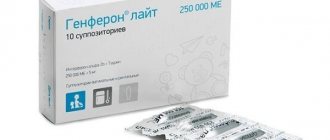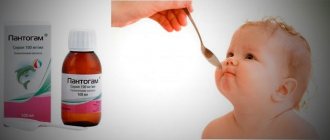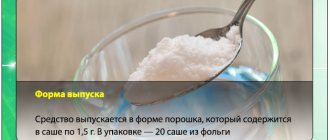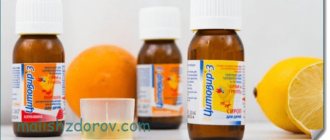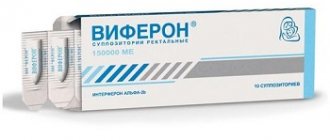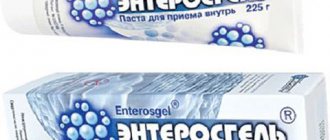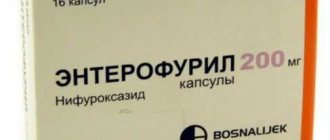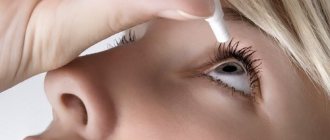Detailed instructions for use
The use of sodium tetraborate is most effective for candidal stomatitis: the solution helps stop the spread of fungus on the mucous membrane of the oral surface. The specific use of borax depends on the severity of the disease, the area of the affected area, and the age of the patient.
In infants
This substance effectively fights fungal spores on the oral mucosa and prevents their reappearance.
Before treating the affected areas with borax, it is worth preparing the oral surface. With stomatitis, the ulcers are often covered with a crust, which prevents the absorption of the drug, so it must be removed. For infants, this is done as follows: a cotton swab is moistened with an oil solution of vitamin A, dried wounds are treated with it, and the crusts are removed with gentle movements.
It is worth remembering that for infants the process of removing the crust can be quite painful, so preliminary anesthesia may be required. For these purposes, drugs containing lidocaine are used.
Further actions for treating fungal-affected areas of the mucous membrane boil down to the following steps:
- the tip of the index finger is wrapped in a sterile bandage;
- the bandage is moistened in a borax solution;
- The baby’s oral surface is treated: plaque is removed from the tongue, the inside of the cheeks and lips.
The described procedure for sanitation of a child’s oral cavity should be carried out no more than 2 times a day. The result will be noticeable after two days of using borax to treat sores.
To avoid relapse of the disease, it is necessary to clean the baby’s oral cavity within 3-4 days after the ulcers have completely healed.
In teenagers
For older children, two methods can be used: rinsing and spotting.
- Rinsing the mouth with borax solution. To prepare the solution, add a tablespoon of rock salt and half a teaspoon of borax to a glass of water. After dissolving the salt, the composition can be used to rinse the mouth.
- Spot treatment is carried out in the same way as in the case of infants. Use a cotton swab dipped in borax solution to wipe the tongue, inner surface of the lips and cheeks. This method is more effective because it allows you to more thoroughly remove plaque from the oral mucosa.
Sometimes the clinical manifestations of stomatitis have a different specificity: cracks and rashes appear on the lips. In this case, an application is used: wipes moistened with the solution are applied to the affected areas and left for a short period of time.
In the next video we will be told in more detail about stomatitis in children:
It is necessary to use the solution for rinsing or spot treatment of the oral cavity no more than twice a day. By treating the affected surface daily for a week, the problem will be eliminated.
In adults
Stomatitis is a disease not typical for adult patients. However, if there are signs of the development of a fungal infection in the oral cavity, you should also use borax in glycerin.
There are several forms of development of stomatitis, the treatment of each of which has its own characteristics:
- Acute stomatitis is characterized by the manifestation of all the signs of the disease: redness of the mucous membrane, swelling, the formation of ulcers, and the appearance of plaque.
To completely cure the disease and eliminate its root cause, the oral cavity must be treated with borax solution up to 6 times a day for 1 week.Using a gauze swab soaked in a medicinal substance, plaque is removed from the affected areas. In addition to spot treatment, you can use mouth rinses.
- If acute stomatitis is not completely cured and the immune system is weak, the disease progresses to the chronic stage.
The causative agent of the infection remains in the oral cavity and with a sharp decrease in the activity of the body’s immune system, it becomes active again. For the treatment of chronic stomatitis, the oral cavity must be treated with a solution of sodium tetraborate up to 3 times a day for 2-3 weeks. If the disease cannot be eliminated during this period, you should seek help from your doctor.
To completely cure ulcers on the surface of the mucous membrane, it is recommended to use sea buckthorn oil, which has a healing effect. In addition, you should refrain from eating too hot food and drinks.
Additional measures
To avoid re-infection, you must follow the following rules:
- monitor your child’s oral hygiene;
- stop biting your nails and putting things in your mouth;
- treat dishes with boiling water: nipples, bottles, plates;
- replace a toothbrush with hard bristles with a soft one;
- treat nipples before breastfeeding;
- Do not feed your baby too hot food.
To reduce pain when eating, special pain-relieving gels are used. In case of extensive damage to the mucous membrane, the spoon can be replaced with a straw, while giving the child only liquid food.
Avoid sour and spicy-tasting foods during treatment so as not to further irritate the mucous membrane. Make sure that the diet is enriched with the necessary mineral and vitamin composition.
Attention must also be paid to the hygiene of the child’s room. It is necessary to regularly wipe the surfaces from dust with a damp cloth, replace vacuuming with a damp one, monitor the freshness of the air, and if it is excessively dry, humidify the air in the room
Along with treatment, it is necessary to strengthen the child’s immune forces and ensure rapid restoration of the affected tissue. For this use:
- Aekol - for applications;
- Vinylin - for quick healing;
- Solcoseryl - to restore damaged tissues;
- Sea buckthorn oil - to relieve pain and restore the epithelium.
To speed up tissue healing, rinse with herbs (between the main treatment). To do this, use chamomile, which has antiseptic wound-healing properties. You can use any herbs with an astringent and antiseptic effect (oak, sage, marigold). They also make applications of aloe juice with honey, and rinse the mouth with propolis tincture.
Baking soda with salt is a common remedy for ulcerative lesions of the mucous membrane. For small children, prepare in the following proportion: a coffee spoon of soda and salt per cup of cooled boiled water. If the baby does not know how to rinse his mouth, wipe the mucous membrane with the solution - moisten the gauze and treat the mouth.
- Medicines in dentistry. Directory / L.N. Maksimovskaya, P.I. Roshchina. - M.: Medicine, 2001.
- “Outpatient surgical dentistry” (Bezrukov V.)
- Mashkovsky M.D.
Medicines. — 15th ed. - M.: New Wave, 2005. - https://www.cdc.gov/niosh/npg/npgd0057.html
Use in adults ↑
Traditionally, it was believed that stomatitis is a childhood disease that occurs in adults in rare cases. Recently, the situation has changed and adults have begun to see a doctor about stomatitis much more often.
Doctors see the reason for the increase in incidence in the deteriorating environment and a general decrease in immunity against this background.
The main cause of stomatitis in adults is the same as in children: an immune reaction to unknown viruses.
Additional reasons may be:
- unbalanced diet;
- mechanical (due to bite or sharp edges of teeth) or chemical trauma to the oral cavity;
- insufficient dental and oral care;
- frequent use of toothpaste containing sodium lauryl sulfate;
- medications with a diuretic effect;
- alcohol and smoking.
- Frequent stomatitis in adults can be of a concomitant nature, that is, indicate the presence of pathologies occurring in the human body. Many of them can be quite dangerous and require prompt diagnosis. This:
- oncological diseases of the pharynx, nose and neck;
- colitis, gastritis and chronic diseases of the gastrointestinal tract;
- anemia;
- HIV;
- hormonal abnormalities.
The set of measures for the treatment of stomatitis in adults depends on the severity of the disease.
For mild cases, it will be enough to treat ulcerative lesions with borax on glycerin 2 times a day, rinse your mouth with herbal infusions, and exclude salty, spicy, very hot and very cold foods.
In the case of a more severe course of the disease and the presence of a large number of non-healing ulcers, only Sodium tetraborate, herbs and folk remedies will not be enough. It is necessary to consult a doctor who will prescribe parallel drug treatment based on antibiotics.
Use for adults
The tactics of medical treatment of stomatitis in adults depends on the form of the disease (chronic or acute), the severity of the course and the stage of development of the disease.
In any case, treatment with sodium tetraborate should only be prescribed by the attending physician due to the presence of multiple side effects in case of overdose.
Therapy for the chronic form of the disease in adult patients is carried out with the use of restorative and antibacterial agents. Sodium tetraborate is often included in the main treatment.
Herpetic rashes on the oral mucosa are treated only with antiviral drugs. The therapeutic treatment scheme has two directions:
- Local. Treatment consists of destroying bacterial microflora and healing ulcer fragments.
- General. Therapy brings relief while taking general restorative medications.
Treatment of chronic stomatitis with sodium tetraborate in adults is justified due to the ease of use of the drug, its relative cheapness and high efficiency. Many patients noted significant improvements within 24 hours.
In acute forms of stomatitis, treatment of the oral cavity with a disinfectant composition must be carried out daily for a week or more, if there are other instructions. Use a gauze swab with borax to blot problem areas of the mucous membrane about 6 times a day.
In case of transformation of the disease into a chronic form, treatment is continued for up to 3 weeks. It is important to combine treatment of acute stomatitis with sodium tetraborate with other healing agents, for example, sea buckthorn oil and special healing gels.
For the entire period of therapy, foods that are aggressive to the mucous membrane (spicy, salty, hot, too cold) should be excluded from the diet.
Contraindications and side effects
Sodium tetraborate should not be taken orally or applied to sensitive and damaged skin (with wounds, scratches)
The drug is toxic, so it is prescribed with caution to infants and children under 10 years of age. For dental problems, it can be used under the supervision of a pediatric dentist.
Absolute contraindications to the use of the product:
READ ALSO: drug Stomatidin with instructions for use for children
- pregnancy,
- lactation,
- sensitivity to components,
- severe damage to the mucous membranes.
When using the drug, itching, an allergic reaction, and hyperemia of the mucous membranes are possible. In this case, the drug is discontinued and analogues are looked for. Other possible side effects include diarrhea, muscle spasms, dermatitis, and intoxication with long-term use.
An overdose of the drug leads to dysfunction of the digestive system. In severe cases, confusion and severe vomiting are observed.
In case of accidental ingestion of the drug, urgent gastric lavage and medical supervision are recommended. A dangerous dose that leads to serious consequences is 20 grams of sodium tetraborate.
To avoid allergic manifestations, the combined use of antibiotics, hormonal drugs and a solution of sodium tetraborate in glycerin should be avoided.
Side effects and overdose
With prolonged use or if a person is hypersensitive to the drug, an allergic reaction may develop.
Pathology manifests itself in redness and swelling of the area treated with the substance, and the formation of a rash on it, accompanied by itching.
In this case, the use of borax should be stopped immediately and contact a specialist to eliminate the reaction.
Sodium tetraborate is a toxic compound and can cause poisoning if accidentally swallowed. The lethal dose for an adult is 10-20 g.
Symptoms of a solution overdose are as follows:
- headache;
- skin rashes;
- abdominal pain, nausea, vomiting;
- indigestion;
- general weakness, confusion;
- impaired functioning of the kidneys and liver;
- in some cases, the development of shock is observed.
If the listed symptoms are detected, it is necessary to perform gastric lavage and call an ambulance.
Borax in glycerin will cure stomatitis in childhood
Stomatitis is one of the most unpleasant oral inflammations for a child. The pathology is accompanied by the formation of painful ulcers, which makes young children very restless. Stomatitis causes no less discomfort to preschoolers, schoolchildren and adolescents. A fairly effective remedy is a solution of sodium tetraborate, better known as borax, in glycerin.
The drug helps remove pathogenic fungus from damaged surfaces of the oral mucosa, and also slows down the further process of reproduction.
The product is not a fungicide, and therefore does not have a toxic effect on the Candida fungus. Borax in glycerin only relieves severe symptoms of stomatitis, but has no effect on the root cause.
Sodium tetraborate solution is used to sanitize the oral cavity. The treatment scheme for infants is as follows:
- Before the procedure, you must wash your hands thoroughly.
- Open the bottle with the product.
- Wrap the surface of your index finger with a sterile bandage.
- Lightly moisten it with the preparation.
- After this, you can proceed directly to processing. First, you need to clean the child's tongue, moving from the root to the tip. Then it removes fungal plaque from the surface of the cheeks and lips.
- The frequency of sanitation is two to three times a day.
The sanitation procedure for infants should be carried out with a napkin, since cotton swabs do not exert the necessary pressure on the surface affected by the fungus. The entire plaque remains in place and the treatment does not have the necessary therapeutic effect.
Instructions for use recommend the following regimen for the treatment of stomatitis in older children:
- Here you need to prepare a rinsing solution: take a large spoonful of coarse salt and half a small spoonful of borax in glycerin into a glass of chilled boiled water.
- The inflamed cavity can also be treated according to the “children’s” scheme.
And yet, it is necessary to know the symptoms. This:
- stomach ache;
- headache;
- attacks of nausea ending in vomiting;
- convulsions;
- loss of consciousness;
- loss of appetite;
- development of arrhythmia.
More serious consequences of an overdose are:
- kidney damage;
- liver dysfunction;
- problems of the cardiovascular system.
In addition to treating stomatitis, a solution of borax in glycerin is recommended to be used:
- for the purpose of disinfecting diaper rash;
- for tonsillitis and pharyngitis (as a component of a rinse solution).
Side effects
Side effects of the drug include:
- mild irritation at the site of application;
- slight itching;
- swelling.
Side effects when using the product occur in children prone to developing allergies. But reviews from mothers who have used the drug are extremely positive. There are no mentions of any adverse reactions.
Our specialist comments:
- If any negative reaction occurs, you should stop using the drug.
- To obtain a more pronounced therapeutic effect, infants can be given a pacifier on which a small amount of borax in glycerin is applied.
- The duration of treatment for stomatitis in children reaches 3...7 days and depends on the severity of the disease.
How to treat stomatitis in a child
Indications and contraindications
In addition to treating stomatitis, a solution of borax in glycerin is recommended to be used:
- for the purpose of disinfecting diaper rash;
- for tonsillitis and pharyngitis (as a component of a rinse solution).
Borax in glycerin is contraindicated for oral use. The use of the product should be avoided if there is an individual intolerance to the component composition.
Contraindications and possible adverse reactions in children
In case of drug overdose, patients may experience:
- diarrhea;
- dizziness;
- nausea;
- vomit;
- muscle spasms;
- confusion;
- lethargy;
- weakness;
- anemia;
- burning in the area of application of the drug;
- allergic reaction;
- Quincke's edema.
The drug does not contain toxic substances, so a priori it cannot provoke poisoning of the body. Sodium tetraborate is contraindicated for those children who suffer from its individual intolerance. Also, the drug should not be used by patients whose mucous membranes are severely damaged or hypersensitive.
This product has the form of a colorless liquid with a mild odor. The main active ingredient is sodium tetraborate, but there are also additional substances in the composition, for example, glycerin. There are two forms of the drug:
- Tablets for rinsing, which are diluted in water in the amount of two pieces. Thus, the desired liquid is obtained, which is used to treat mucous membranes in adults.
- 20% ready-made solution in glycerin, sold in 30 ml glass bottles. This is the option that is recommended for treating children, because it can be used to safely treat oral wounds.
This substance is very effective, especially if it is used from the early stages of symptom detection. But in order for the product to penetrate well into the affected area, you should gently and carefully remove the hard crusts. The best way to do this is with a cotton swab, which is soaked in some oil solution, for example, with vitamin A.
What is sodium tetraborate
Borax with glycerin or sodium tetraborate is a product with a bacteriostatic and antiseptic effect that effectively removes and inhibits the proliferation of fungus. This drug is available in the form of a powder or solution for topical use. The active component of the drug has antimicrobial and antiparasitic effects. The composition of the anhydrous drug is enriched with glycerin, which optimizes the penetration of the main substance onto the skin and mucous membranes.
Sodium tetraborate (sodium tetraborate) the Latin name of the substance is Natrii tetraborati is a derivative of boric acid. The medicinal formula of the drug Na2B4O7 is a combination of boron and acid salts. As an antimicrobial agent, tetraborate is often included in medications used to relieve inflammation of the upper respiratory tract. Pharmacodynamics: the substance is beneficial only when applied to damaged skin and mucous membranes. Through them, it is absorbed by the gastrointestinal tract and further excreted through the kidneys and intestines.
Compound
Borax is produced, as a rule, in the form of a powder or solution, which contains 20% of the active substance. The composition of the product includes the main substance sodium tetraborate and an auxiliary component - glycerin. Borax crystals do not dissolve in alcohol, so the substance must be diluted with water or purchased a ready-made solution in glycerin. This viscous liquid is a good solvent for inorganic compounds, so it is widely used in medicine and cosmetology. Tetraborate can be sold in the form of an aqueous solution of 10 and 20 percent concentration.
Properties
Borax solution is an antiseptic that is used in the perfume, pharmaceutical, food and cosmetics industries. The active formula of the product is aimed at eliminating pathogenic microflora in the oral cavity, vagina, and respiratory tract. The drug is used in the form of rinses, inhalations, applications and lotions. Pharmacokinetics. Sodium tetraborate:
- promotes the removal of fungal mycelium;
- has antiseptic and bacteriostatic effects;
- prevents the attachment of fungi to the walls of the vagina and stops the process of their reproduction.
Indications for use
According to the instructions, tetraborate can be used for damage to the mucous membranes of the pharynx, mouth, genitals, urinary and upper respiratory tract caused by candidiasis. A 20% solution of the substance is effective for disinfecting diaper rash and bedsores. Being a disinfectant and antiseptic, borax is indicated for use in:
- stomatitis;
- pharyngitis;
- cracks in the skin;
- tonsillitis;
- damage to the urinary tract;
- stomatitis in newborns;
- skin fungus;
- gingivitis;
- periodontal disease;
- pyorrhea;
- vaginal candidiasis.
- colpitis.
pharmachologic effect
The key active ingredient of the drug, the sodium salt of boric acid, has a pronounced disinfectant and bacteriostatic effect , which is manifested in the effective removal of the causative agent of stomatitis and in preventing its further development.
Another important component is glycerin, which helps reduce the irritant effect caused by boric acid salt. In addition, it accelerates the penetration of borax through the oral mucosa, thereby increasing the effectiveness of its effect on fungal formations that cause stomatitis.
When applied topically, the borax solution is quickly absorbed through the mucous membrane, processed by the digestive system and removed from the body through the excretory system.
Diagnosis and symptoms of stomatitis
The appearance of purulent white ulcers on the mucous membrane (stomatitis) worries children almost from birth. The causes of this pathology are not fully understood: perhaps it is a reaction of the immune system to an as yet unrecognized virus.
In children, the disease is severe:
- the mucous membrane swells and turns red;
- ulceration forms at the site of the white plaque;
- hyperthermia and general malaise are noted;
- lymph nodes enlarge;
- Sometimes ulceration appears on the surface of the lips and skin.
Stomatitis differs in the nature of the disease: acute and recurrent form. The causes of stomatitis can be caused by infection of the body or injuries to the mucous membrane, for example, a hard nipple on a bottle of formula. Stomatitis is most common in infants: the habit of trying everything on the tooth leads to inevitable injuries. In adults, mucosal ulceration can be caused by poor oral hygiene or aggressive antibiotic therapy.
A factor creating conditions for the development of the disease may be:
- acute infection;
- dermatitis;
- blood diseases;
- vitamin deficiency;
- mucosal injury;
- use of certain medications.
In most cases, stomatitis of an infectious nature occurs, caused by oral bacteria - they constantly live on the mucous membrane. A decrease in the tone of immune bodies provokes active growth and reproduction of bacteria. In children, aphthous stomatitis, which occurs against the background of immune deficiency, is more common.
detailed instructions
Dentists prescribe a remedy for the treatment of stomatitis in patients of various age categories.
The substance helps fight Candida fungi, which can develop on the mucous membrane of both adults and infants.
However, to obtain maximum results, you should adhere to certain rules for applying the product, which differ slightly depending on the age of the patient and the stage of progression of the disease.
Use for infants
A mild form of the disease responds well to treatment with borax in glycerin, which should be used as follows:
- Preparation of the oral cavity. With stomatitis, ulcers may form on the surface of the mucous membrane, which become covered with a dense crust, preventing the medication from being fully absorbed.
Therefore, parents need to treat the wounds with a gauze swab coated with an oil solution of vitamin A or sea buckthorn or peach oil.The movements should be careful so that the crust softens and does not break off. Since the process can cause pain to the child, you can first treat the mucous membrane with a drug based on Lidocaine.
- Treatment of the mucous membrane.
A sterile gauze swab should be moistened in a solution of sodium tetraborate, and then wipe the baby’s tongue, palate, inner surface of the cheeks and lips with it. If using a tampon is inconvenient, you can wrap your index finger with a small piece of sterile bandage, apply the solution to it and treat the baby’s oral cavity.
It is necessary to wipe ulcerative formations with borax no more than twice a day. Often, two days are enough for the disease to subside, but experts recommend continuing treatment for 2-3 days after the ulcers have healed to prevent recurrence of stomatitis.
Advice to parents! Do not forget to wash your hands thoroughly and treat them with an antiseptic before you begin to cleanse the baby's mucous membranes. This will prevent the risk of additional infection.
Application for teenagers
In children of the older age group, the number of methods for treating ulcers is expanding. Dentists recommend choosing the most convenient method among the following options:
- Spot processing. The procedure is no different from the method described for infants. Children can wipe the areas where ulcers accumulate with cotton or gauze pads soaked in a borax solution. After the procedure, you must thoroughly rinse your mouth with water.
- Applications. If rashes are present on the inner surface of the lips, to treat them, you can moisten a gauze pad with a tetraborate solution and apply it to the affected area for 5-7 minutes.
- Rinse. The instructions for use suggest this option for preparing the solution: add 5-7 drops of borax solution and a teaspoon of salt to a glass of warm water. The frequency of rinsing with this composition is 2-3 times during the day.
To increase the effectiveness of the product, before use, you must thoroughly brush your teeth and rinse your mouth with water.
After applying the drug, it is advisable to refrain from eating for 30-40 minutes.
Use for adults
The specific treatment regimen is selected by a specialist, depending on the form of the disease:
- For acute stomatitis, boric acid salt is used in the form of a ready-made solution, which is used to moisten a gauze swab, after which the ulcers located on the palate, tongue, gums and other parts of the oral cavity are wiped.
The procedure must be performed 5-6 times a day. Depending on the severity of the disease, the duration of therapy can be 1-2 weeks. Rubbing the sores can be supplemented with applications and rinses. - The chronic form of stomatitis develops as a result of the persistence of the pathogen in the oral cavity with insufficiently thorough treatment of the acute phase of the disease.
A decrease in immunity as a result of any viral disease threatens a new intensification of stomatitis. To get rid of it, experts recommend treating emerging ulcers with a solution 3-4 times a day.The duration of therapy often reaches 2-3 weeks. In this case, the dentist will definitely prescribe medications for internal use, which will speed up the healing process.
Use of sodium tetraborate for stomatitis in children
The use of borax in glycerin is very simple: it is enough to treat the affected areas of the child’s oral cavity two to three times a day. First, of course, you need to remove any remaining food or other medications - this is done by rinsing and brushing your teeth. For rinsing, you can prepare a decoction of chamomile, St. John's wort or oak bark - this will speed up recovery.
The solution is applied to a cotton or gauze swab, after which the inflamed areas of the mucous membrane are gently wiped. For some time after using borax in glycerin, you should not eat or drink.
Sodium tetraborate in diluted form is also suitable for rinsing. To prepare a medicinal solution, just add a few drops of the drug to a glass of warm water. You can rinse your mouth and throat up to 5 times a day.
For mild stomatitis, 1-2 days of use of the drug is sufficient; relapses usually do not occur. In case of reduced immunity and extensive damage to the mucous membrane, it is recommended to extend the use for 3-5 days.
How to use borax in glycerin for children
Despite the toxicity, treatment of newborns and young children with the drug is acceptable. Children, just like adults, are susceptible to fungal attacks, and therefore suffer from candidiasis and stomatitis. It is believed that glycerin prevents the absorption of substances contained in borax that are potentially dangerous to the child’s body.
However, in pediatric practice there is no consensus regarding the admissibility of such treatment. There have been cases where a solution of borax in glycerin provoked an individual allergic reaction and toxic damage. This can happen if the child's body is hypersensitive to some ingredient.
Thrush in newborns
Borax in glycerin is effective for thrush in newborns. The disease affects the mucous membranes of the mouth, skin, umbilical cord area, groin area, and genitals in girls. There have been cases of damage to internal organs, but they are rare.
As a rule, children at risk suffer from:
- born weakened;
- premature;
- having immune disorders;
- treated with antibiotics in the first days or weeks of life.
Infection with pathogenic microorganisms occurs through the birth canal of a sick mother - a carrier of the infection. With any physical problem in the child’s body, his immune system is unable to cope with the attack of pathological microflora.
Borax with glycerin for thrush in infants is prescribed by pediatricians quite often. However, independent use of the drug is a huge risk; responsibility for the consequences lies entirely with the parents. Due to high toxicity, manufacturers indicate children's age as a contraindication.
If the doctor nevertheless decided to use the solution and prescribed treatment, then it is carried out externally and consists of treating the affected areas of the body with the solution up to 4 times during the day.
The drug should be applied after feeding. The duration of treatment is regulated by the pediatrician. As a rule, treatment is done 3 days after the symptoms disappear.
Stomatitis in children
Stomatitis is the most common problem for parents raising young children. The disease causes great discomfort to the baby, does not allow him to eat normally, and is often accompanied not only by pain, but also by an increase in temperature. Characteristic signs of stomatitis are a white coating on the tongue and the inner surface of the cheeks, redness, swelling of the mucous membrane, and the formation of ulcers on both the mucous membrane and lips.
Borax in glycerin for stomatitis is an effective remedy that helps to cope with the disease in a few days. Treatment consists of treating the mucous membrane with a bandage soaked in a solution. The easiest way is to wrap your finger in a cloth to remove the plaque. This should be done three times a day.
The mother needs to be prepared for the child to protest, because the procedure causes him pain. Here you should be persistent, because borax in glycerin for stomatitis in children is one of the most effective means of getting rid of the disease.
However, we must be aware of possible individual reactions in children. In case of any manifestation of trouble, you should stop treatment, rinse the mucous membrane with clean water, and call an ambulance.

